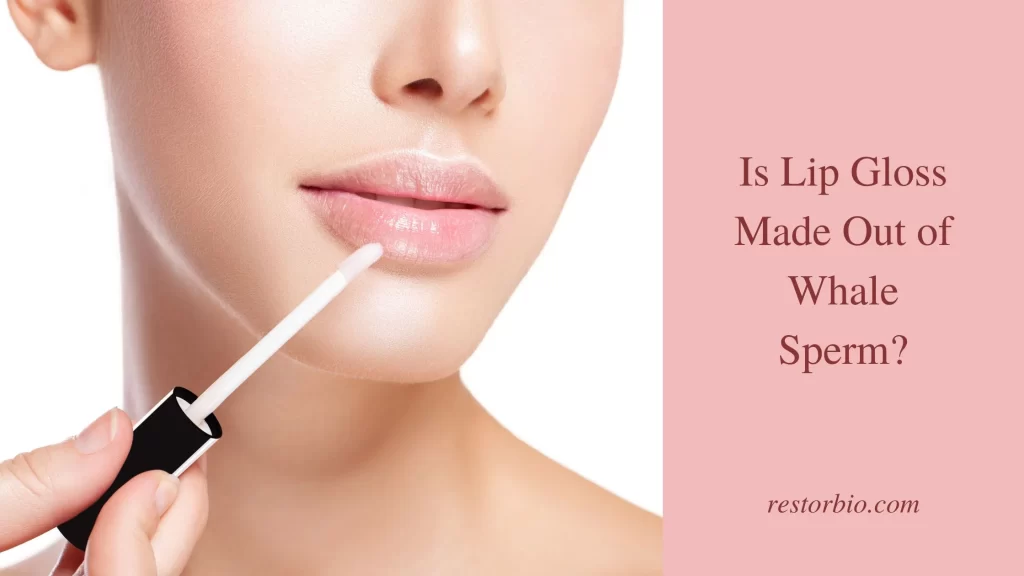Understanding the Myth: Is Lip Gloss Made from Whale Sperm?
The notion that lip gloss contains whale sperm is a persistent myth that has circulated for decades. This misconception often arises from confusion about historical ingredients used in cosmetics and the terminology associated with them. In this article, we will explore the origins of this myth, the actual ingredients in modern lip gloss, and the broader implications of using animal-derived products in cosmetics.
The Origins of the Myth
The myth that lip gloss is made from whale sperm likely stems from the historical use of a substance called spermaceti. Spermaceti is a waxy substance found in the heads of sperm whales and was once used in various cosmetic products, including creams and pomades. However, it is crucial to understand that spermaceti is not whale sperm; rather, it is a byproduct of the whale’s biology, specifically from its digestive system.
Historical Context
- Whaling Practices: During the 18th and 19th centuries, commercial whaling was prevalent, and many products derived from whales were used in cosmetics and other industries. Spermaceti was valued for its smooth texture and emollient properties, making it a popular ingredient in creams and ointments.
- Decline of Whale Products: With the decline of whale populations due to overhunting and the advent of synthetic alternatives, the use of spermaceti and other whale-derived ingredients in cosmetics has significantly diminished. Today, the use of any whale products in cosmetics is rare and often illegal due to conservation efforts.
What Is Lip Gloss Made Of?
Modern lip gloss formulations have evolved significantly and typically include a variety of ingredients designed to provide moisture, shine, and flavor. Here’s a breakdown of the common components found in lip gloss:
| Ingredient Type | Purpose |
|---|---|
| Emollients | Oils (like jojoba, coconut, or castor oil) that provide moisture. |
| Waxes | Beeswax, carnauba wax, or candelilla wax for texture and stability. |
| Solvents | Ingredients like mineral oil or petrolatum that help blend the formula. |
| Colorants | Dyes or pigments that give lip gloss its color. |
| Flavorings | Natural or artificial flavors to enhance taste. |
| Preservatives | Ingredients that prevent microbial growth and extend shelf life. |
| Antioxidants | Vitamins (like Vitamin E) that protect the product and nourish the lips. |
Debunking the Whale Sperm Myth
- Scientific Evidence: There is no scientific basis for the claim that whale sperm is used in lip gloss. Modern formulations are designed to be safe, effective, and compliant with cosmetic regulations, which prohibit the use of endangered species products.
- Ingredient Transparency: Cosmetic manufacturers are required by law to list all ingredients on their packaging. A reputable lip gloss will not contain “whale sperm” or any similar ingredient.
- Ethical Considerations: The use of whale products is heavily regulated in many countries due to conservation laws aimed at protecting endangered species. This makes the inclusion of whale-derived ingredients in cosmetics not only unethical but also illegal.
The Role of Spermaceti in Cosmetics
While spermaceti was once a common ingredient in cosmetics, its use has largely fallen out of favor due to ethical concerns and the availability of synthetic alternatives. Here are some key points regarding spermaceti:
- Properties: Spermaceti has a high melting point and is insoluble in water, making it an effective emollient in creams and ointments.
- Current Status: Today, spermaceti is rarely used in cosmetics, and most formulations rely on plant-based oils and synthetic ingredients to achieve similar effects.
Alternatives to Animal-Derived Ingredients
As consumers become more aware of the ethical implications of using animal-derived products, many cosmetic brands have shifted toward cruelty-free and vegan formulations. Here are some alternatives commonly found in modern lip glosses:
| Alternative Ingredient | Purpose |
|---|---|
| Plant Oils | Jojoba oil, coconut oil, and argan oil for hydration and nourishment. |
| Synthetic Waxes | Alternatives to beeswax that provide similar texture without animal products. |
| Vegan Colorants | Plant-based dyes and pigments that do not involve animal testing or byproducts. |
| Natural Preservatives | Ingredients like rosemary extract that help preserve without synthetic chemicals. |
The Future of Lip Gloss
The cosmetic industry is continually evolving, with a growing emphasis on sustainability and ethical sourcing. As consumers demand more transparency and cruelty-free options, brands are increasingly reformulating their products to align with these values. This shift is likely to further diminish the relevance of historical ingredients like spermaceti in favor of modern, plant-based alternatives.
FAQ Section
1. Is lip gloss really made from whale sperm?
No, this is a myth. Modern lip gloss is made from a variety of ingredients, including oils, waxes, and colorants, but does not contain whale sperm.
2. What is spermaceti, and why is it associated with this myth?
Spermaceti is a waxy substance found in the heads of sperm whales. It was historically used in cosmetics, but it is not sperm and is rarely used in modern formulations.
3. Are there any animal products in lip gloss?
Some lip glosses may contain animal-derived ingredients like beeswax or lanolin, but many brands now offer vegan and cruelty-free alternatives.
4. Why is it important to avoid animal products in cosmetics?
Avoiding animal products in cosmetics is important for ethical reasons, including animal welfare and environmental sustainability.
5. How can I find cruelty-free lip gloss?
Look for brands that explicitly label their products as cruelty-free or vegan. Many companies are transparent about their ingredient sourcing and testing practices.
6. What are some common ingredients in modern lip gloss?
Common ingredients include emollient oils, waxes, colorants, flavorings, and preservatives.
7. How can I tell if a lip gloss is safe to use?
Check the ingredient list for transparency and avoid products with harmful chemicals or those that do not disclose their sourcing practices.
Conclusion
The myth that lip gloss is made from whale sperm is unfounded and likely arises from historical confusion regarding spermaceti. Modern lip gloss formulations are diverse and primarily composed of safe, synthetic, and plant-based ingredients. As the cosmetic industry continues to evolve, consumers can expect more cruelty-free and ethical options that align with their values. Understanding the ingredients in cosmetics empowers consumers to make informed choices about the products they use.For more information on cosmetic ingredients and safety regulations, you can refer to the U.S. Food and Drug Administration (FDA) page on Cosmetics.



